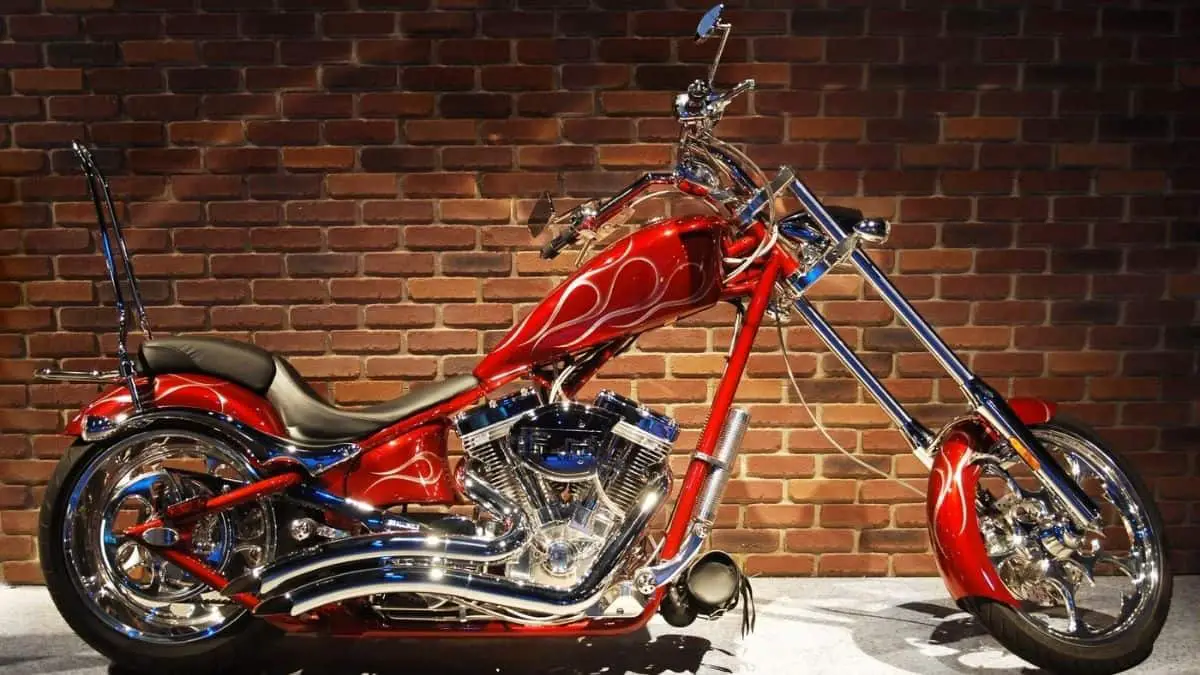What Are Motorcycle Frames Made Of?
When we talk about motorcycles’ specs, we usually think about its engine power, braking system, or even stylistic characteristics. However, that piece of metal that holds your motorcycle together might make a much bigger difference than you realize!
What exactly is my motorcycle frame made of? Does the type of material make any difference?
These are some of the questions that we are going to discuss in today’s article!
Related post: Best Motorcycle Chain Cleaner and Kits to Keep You Rolling Along
What Are Motorcycle Frames Made Of
Steel

Good old fashioned and reliable steel – used for decades to build motorcycle frames, and for good reason! Steel is an incredibly popular frame material among manufacturers because it’s cost-effective, easy to repair, and durable. That’s why you will find that most low-mid range motorcycles will have steel frames.
What are the downsides of a steel frame I hear you say? Well, its long-lasting and affordable attributes come at a price, steel frames tend to be pretty heavy.
With the emergence of new manufacturing materials like aluminum, carbon fiber, and titanium, paired with the popular demand for more lightweight and faster motorcycles, it’s easy to see why steel tends to be restricted to budget market bikes.
Aluminum

Over the last two decades, aluminum has been steadily increasing in popularity amongst motorcycle manufacturers. In fact, many of today’s top manufacturers (Honda, Yamaha, etc.) now prefer aluminum to its counterpart steel. Aluminum is very appealing to the eye with its glowing silver appearance, and it’s a much lighter material, weighing almost three times less than steel. If you’re looking for a faster, more nimble ride that doesn’t break the bank, then aluminum might be the best material for you!
However, bear in mind that the luxury of having a lighter bike isn’t without its problems. In general, aluminum is not as strong as other competing materials such as steel.
Carbon Fiber

You’ve probably heard of carbon fiber being used in a variety of settings such as high-end sports cars, aeroplanes, and even sports equipment such as tennis rackets. Its history dates back to the 1800s, but it wasn’t until recently that manufacturers have started considering using the innovative material to create motorcycle frames.
If it’s been around for so long, then why are they only starting to use it now? Well, it’s expensive, very expensive.
For this reason, it’s exclusively used in high-performance environments such as MotoGP. A recent example of this groundbreaking technology is Ducati’s ‘1299 Superleggera,’ which weighs an astonishing 340 pounds! Carbon fiber weighs a fraction of its rival materials and is also much stronger than steel, so it’s easy to see why it’s becoming the premium material of choice.
As technology keeps advancing and the demand for carbon fiber products increases, then it’s inevitable that we will see more and more carbon fiber frames on the market to the general public. It’s time to save some money on that new bike!
Other Note-Worthy Materials
Magnesium
Magnesium is a metal that has been experimented with in the past in an attempt to create alternative lightweight frames, most notably Honda’s ‘Elf5 – NSR500, ’ which famously debuted in the 1984 Grand Prix. However, it seems that Magnesium frames never really caught on due to their vulnerability to corrosion, effectively weakening the structure; that’s not what you want going around a corner at 80mph!
Even though you won’t find many bikes showcasing a magnesium frame, it’s fairly common to have other parts of a motorcycle be made from the lightweight material.
Titanium

As strong as steel but 75% lighter. So what’s the problem? Well, Titanium is a very expensive metal to extract and produce, meaning the price tag of the bike would most likely be unaffordable to the average commercial market. In comparison to its closest rival, carbon fiber, titanium doesn’t offer as much flexibility in the frame. This results in worse handling performance, something I’m sure MotoGP engineers aren’t particularly fond of!
Like magnesium, you will find titanium parts throughout many mid-high range motorcycles, for example, the intake valves on Aprilla’s RSV4.
Conclusion
It’s safe to say carbon fiber is probably the best material to manufacture a motorcycle frame out of. Carbon fiber’s lightweight, flexible, and strong characteristics make it the perfect material for a frame. Still, until the price drops, there probably won’t be an influx of carbon bikes entering the market!
Steel and aluminum seem to be at the forefront of motorcycle frame manufacturing, and for different reasons. Both materials offer pros and cons to the rider, which ultimately comes down to personal desires and preferences.
Frequently Asked Questions
How do I know what material is best for me?
This essentially comes down to what you want from your motorcycle and how you’re going to be riding it. If you are looking for an entry-level commuting bike, then maybe a steel frame is sufficient. Although, if you want something a bit more agile, then aluminum could do the trick! If you have the opportunity to test drive a bike with each material of frame, then it could help clarify what suits you best.
I’m buying my first motorcycle, should I buy a steel frame bike?
Steel is the cheapest, most durable and easiest to repair – everything that most beginner riders want! My first bike had a very basic steel frame, perfect for finding your feet in the motorcycling world.





